A strong solar flare measuring M7.4 erupted from Active Region 3615 at 07:36 UTC on March 20, 2024. The event started at 07:23 and ended at 07:47 UTC.
There were no radio signatures detected that would suggest a coronal mass ejection (CME) was produced. Even if it was, the location of the source region does not favor Earth-directed CMEs. This will change in the days ahead as the region moves into a geoeffective position.
Region 3615 has a ‘beta-gamma’ magnetic configuration and is capable of producing more strong eruptions on the Sun.
Radio frequencies were forecast to be most degraded over the Middle East, eastern Africa, southern Asia, and the Indian Ocean at the time of the flare.
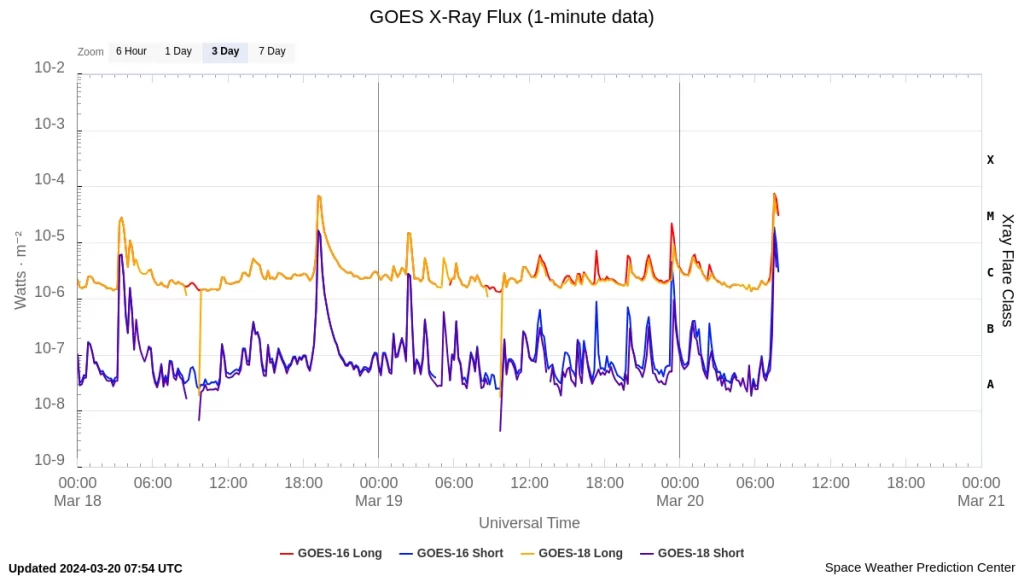
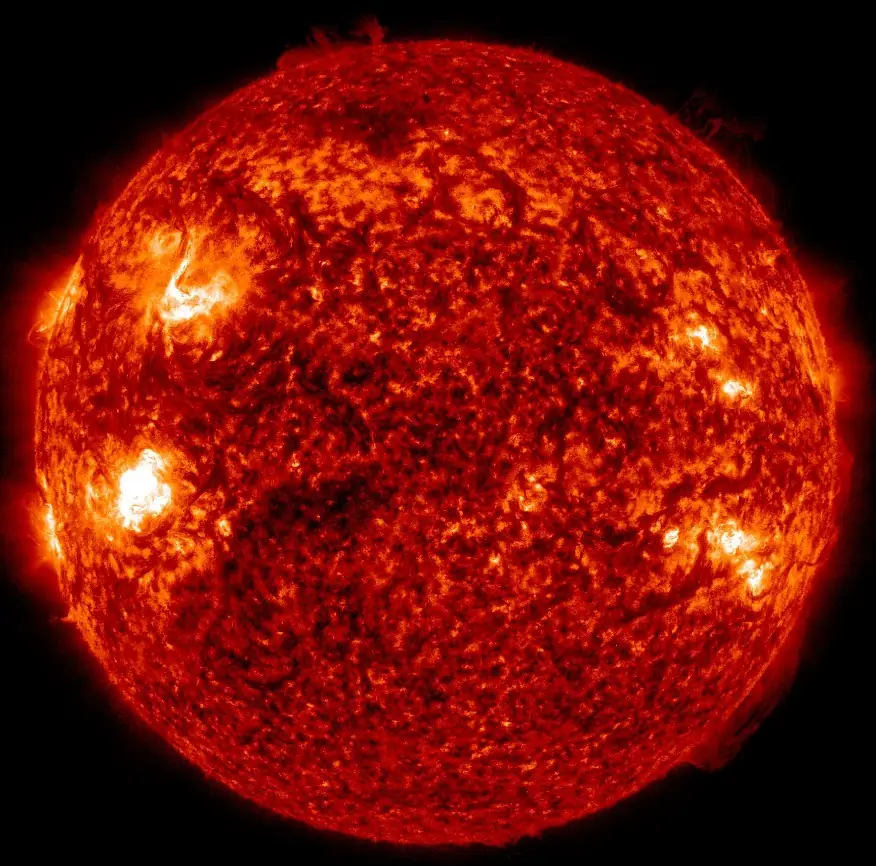

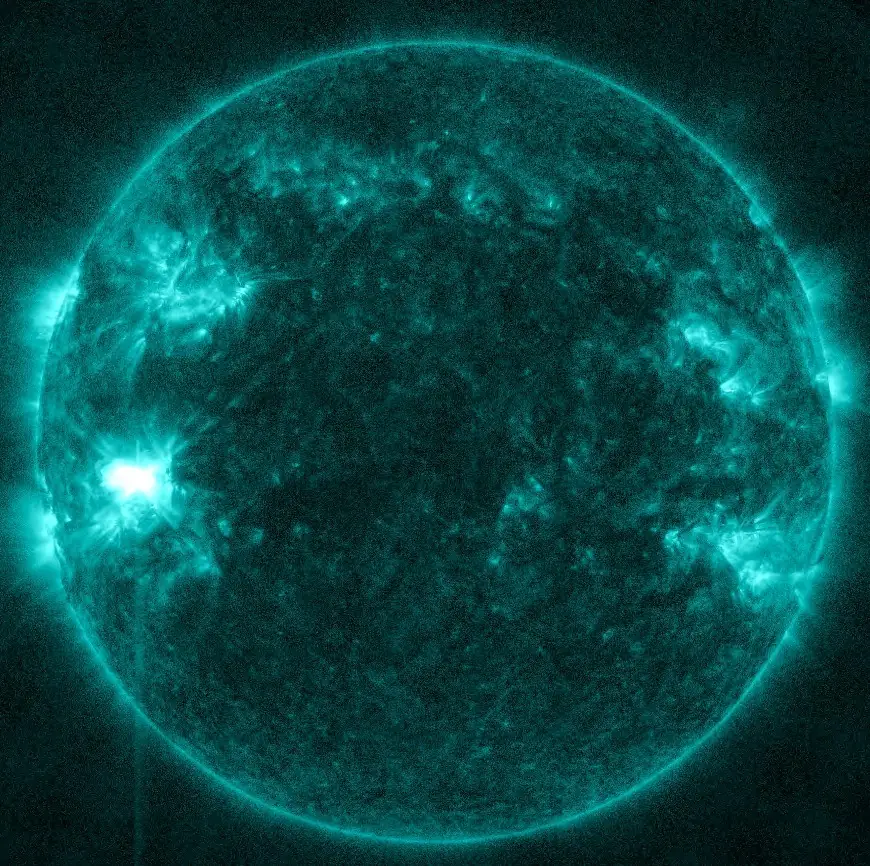

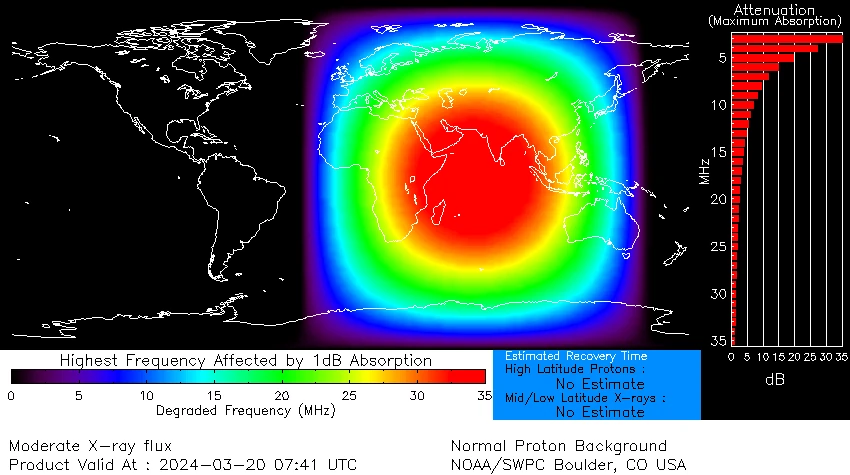

Solar activity was at moderate levels in 24 hours to 00:30 UTC on March 20, with an impulsive M1.4 flare at 02:29 UTC on March 19 and an M2.1 at 23:27 UTC, both from Region 3615. This region exhibited intermediate and leader spot growth over the period and was also responsible for numerous C-class solar flares, including C5.3, M5.9, C7.1, and C5.8.
Region 3616 (beta) produced a C5.2 flare at 03:47 UTC and a C5.9 at 21:30 UTC. It showed signs of evolution, gaining a weak gamma signature in its intermediate area. The remainder of the disk and limb was quiet and stable.
No Earth-directed CMEs were observed in the available imagery.
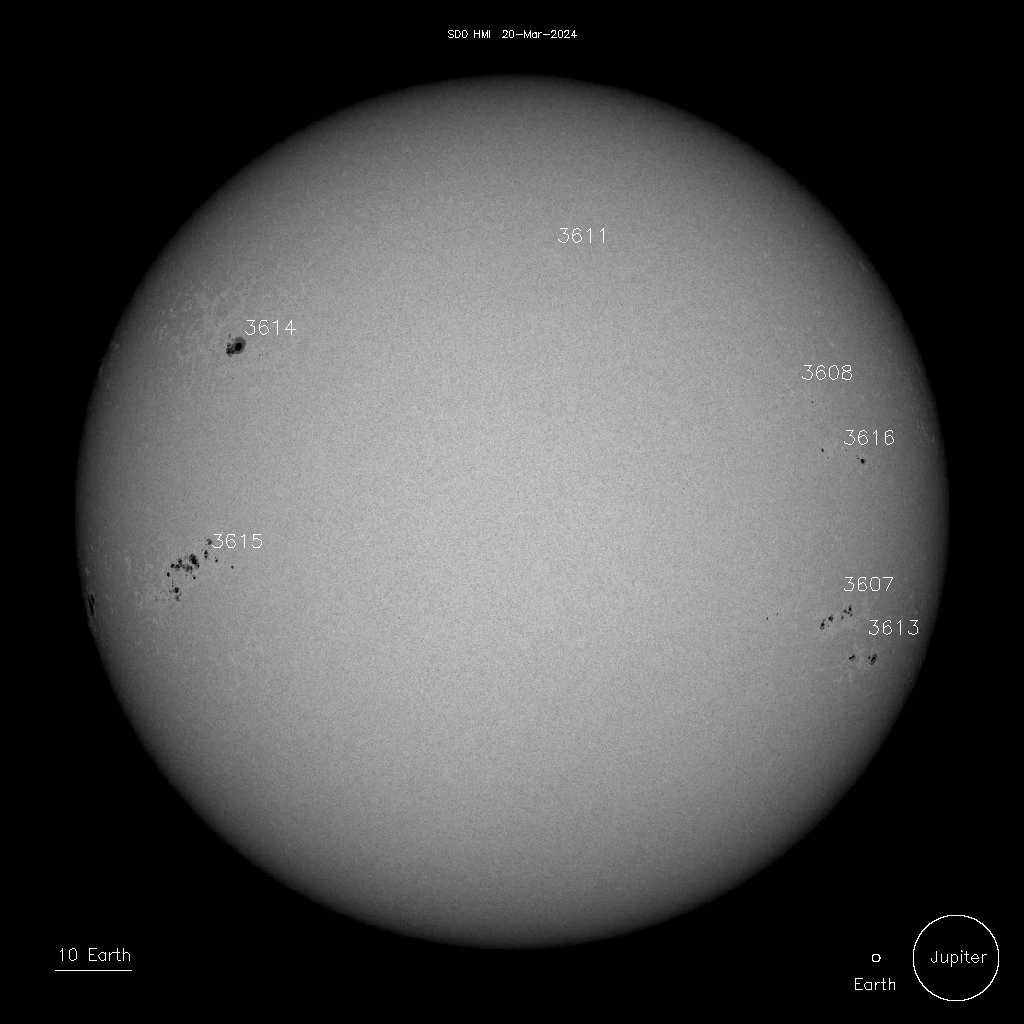

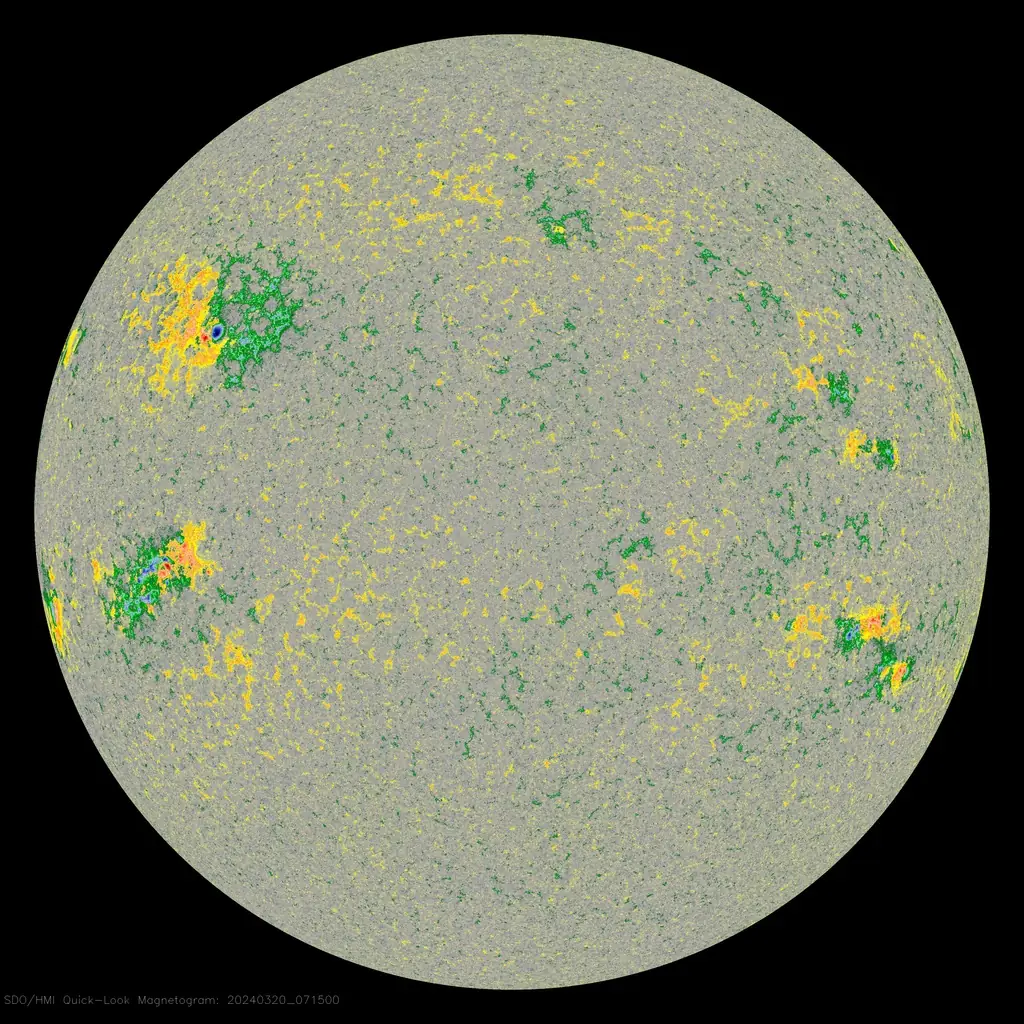

The greater than 10 MeV proton flux was elevated above background levels over the same period but remained well below the event threshold. The greater than 2 MeV electron flux was at normal to moderate levels.
Looking ahead, the greater than 10 MeV proton flux is expected to remain slightly elevated, but below event levels on March 20, and slowly return to background levels over March 21 and 22. The greater than 2 MeV electron flux is expected to be at normal to moderate levels.
Solar wind parameters reflected likely transient influences beginning late on March 18. The total field increased to 9 – 11 nT, and the Bz component underwent a prolonged, southward deflection reaching -7 nT. Solar wind speeds gradually increased from approximately 360 km/s to ~410 km/s. Phi was variable throughout the period.
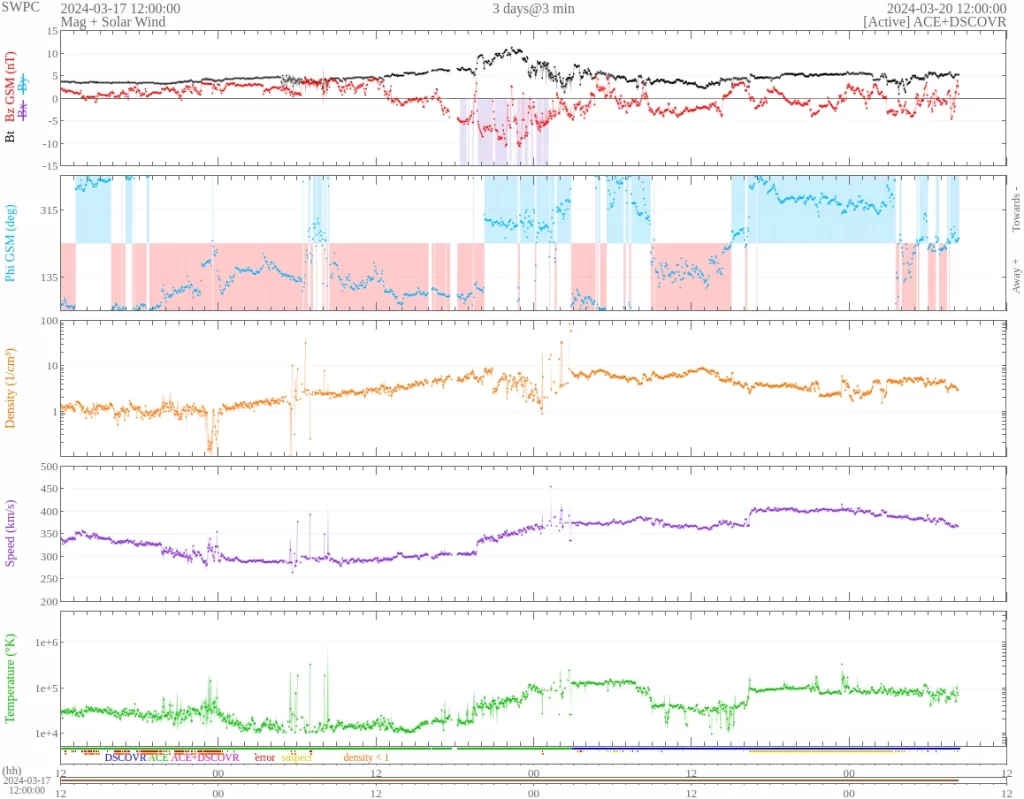

Weakly enhanced solar wind conditions are expected to prevail over the first half of March 20. More enhanced solar wind conditions are expected after midday on March 20 through March 21 due to the anticipated arrival of CMEs associated with the March 17 filament eruption.
Conditions are expected to gradually wane on March 22.
The geomagnetic field was at quiet to unsettled levels in 24 hours to 00:30 UTC today. It is expected to be at quiet to unsettled levels through midday on March 20. Periods of active conditions and G1 – Minor storming are likely during the latter half of March 20 through March 21 due to the anticipated arrival of CMEs associated with the March 17 filament eruption.
Quiet to unsettled conditions are expected on March 22 as CME effects slowly wane.
References:
1 Forecast Discussion – Issued: 2024 Mar 20 0030 UTC – Prepared by the U.S. Dept. of Commerce, NOAA, Space Weather Prediction Center
Featured image credit: NASA SDO/AIA 131. Acquired at 07:37 UTC on March 20, 2024
Strong M6.7 solar flare erupts from emerging region on SE limb
Monday, March 18, 2024
Filament eruption produces Earth-directed CMEs
Monday, March 18, 2024
Strong solar flare erupts from the SE limb, signaling increased solar activity in the days ahead
Saturday, March 16, 2024
Proton flux rising following multiple long-duration C-class flares, S1 – Minor solar radiation storm
Saturday, March 16, 2024
Strong M7.4 solar flare erupts from AR 3599, producing CME
Sunday, March 10, 2024
Filament eruption produces large CME, slight graze possible
Thursday, March 7, 2024
Major X6.3 solar flare erupts from Region 3590
Thursday, February 22, 2024
